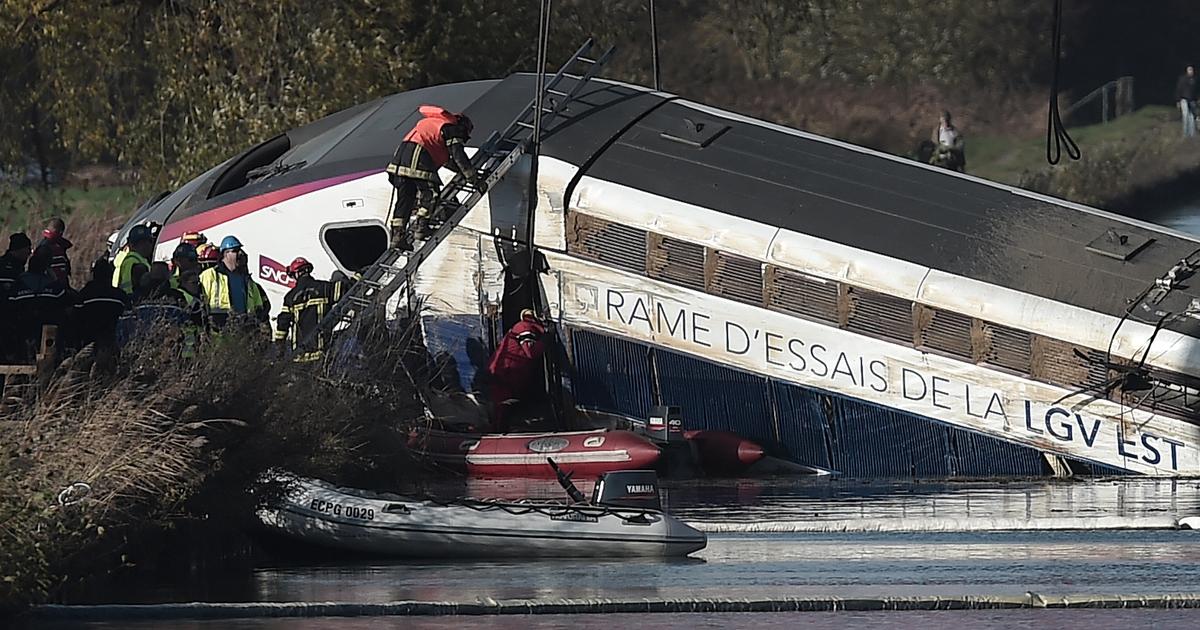After a train accident near Garmisch: slow-moving zones arranged at 20 km/h
Created: 06/29/2022, 10:27 am
By: Dirk Walter
The investigations after the train accident near Garmisch continue.
© Angelika Warmuth/dpa
More than three weeks after the accident, the railway has now set up numerous slow-moving sections, five of which are on the Werdenfelsbahn alone.
Munich – Anyone who regularly takes the train from Weilheim in the direction of Munich, for example, has recently been slowed down.
Immediately after leaving Weilheim station, the engine driver has to brake again – a maximum of 40 km/h is permitted on a 600-metre-long section of track.
The situation is repeated a few kilometers further north near Wilzhofen, where the train is suddenly only allowed to travel at 70 km/h.
And then it gets really extreme after passing Starnberg station on a 200-meter stretch between Gauting and Munich-Pasing: just 20 km/h are now allowed here - instead of the usual 140 km/h.
Train accident near Garmisch: suspected defects on the embankment
The reason for these speed limits can be found in the so-called Tages-La, i.e. the list of temporary speed restrictions (La), which every engine driver receives updated daily.
Our newspaper has the almost 150-page compilation for southern Germany (La area south) for this Monday.
According to this, upper construction defects were identified in five sections of the Werdenfels network between Oberau and Munich-Pasing after the accident.
The first was set up on June 8, five days after the train accident near Garmisch-Partenkirchen that killed five.
Was a superstructure defect also the cause of the accident?
According to information from our newspaper, the investigations are in fact now concentrating on the infrastructure at the scene of the accident.
Although the bogies of the wagons involved in the accident were also confiscated, damage to one of the wheels, for example, seems unlikely.
"In addition to the vehicles, the infrastructure is also the subject of the investigations," explains Moritz Metzler from the Federal Bureau of Railway Accident Investigation (BEU).
The route is still closed and the railway cannot start repairs yet.
500 sleepers and 700 meters of track have to be laid, and the overhead line has to be redrawn, as a railway spokesman explains.
The old rails and sleepers have been confiscated, says the Munich II public prosecutor.
Speed-restricted sections in Upper Bavaria at a glance
After the accident, DB Netz ordered speed restrictions due to defects in the superstructure – including at the following locations:
Dachau train station–Altomünster (400 m, 20 km/h)
Munich–Mühldorf (100 m, 30 km/h)
Munich–Lenggries (200 m, 20 km/h and 900 m, 70 km/h)
Holzkirchen–Bayrischzell (a total of 600 m at three points, each 20 km/h)
Freilassing–Berchtesgaden (600 m, 20 km/h)
S2 Markt Schwaben–Erding (100 m, 70 km/h).
Speed limits in Upper Bavaria – even Tempo 20 applies
It is not denied that the investigators are now concentrating on the underground, i.e. the railway embankment.
"The railway embankment is being clarified," it says.
The public will probably only find out what happened in detail when the BEU presents an interim report on the accident.
That was the case after about four months of the Schäftlarn S-Bahn accident.
also read
G7 in Elmau: Having a spritz with Brigitte Macron and Britta Ernst – Carrie Johnson gives private insights
G7 summit in Elmau: "Bavaria can summit" exults Söder - but the gastro has to evaluate the "damage".
Meanwhile, rumors are circulating in railway circles about possible accident scenarios.
One theory is that a measurement train detected a deviation in the track position in the days before the accident.
This could have been caused by a so-called mud spot, as the technical jargon calls it.
If the ground is soaked, the height of the two rails can change - such twisting of the track can lead to derailments.
This assumption is also circulating at DB Netz.
The railway subsidiary is now playing it safe.
In the days after the accident, for example, slow-moving zones were also ordered on other routes, for example on the Munich-Rosenheim-Freilassing route, where near Aßling (Ebersberg district) the speed limit has even been 20 since June 7th.
And there are constantly more superstructure defects, only on Monday in the Oberland network on the single-track line Gmund-Tegernsee, which is impassable until Thursday at the behest of the Tegernseebahn.







